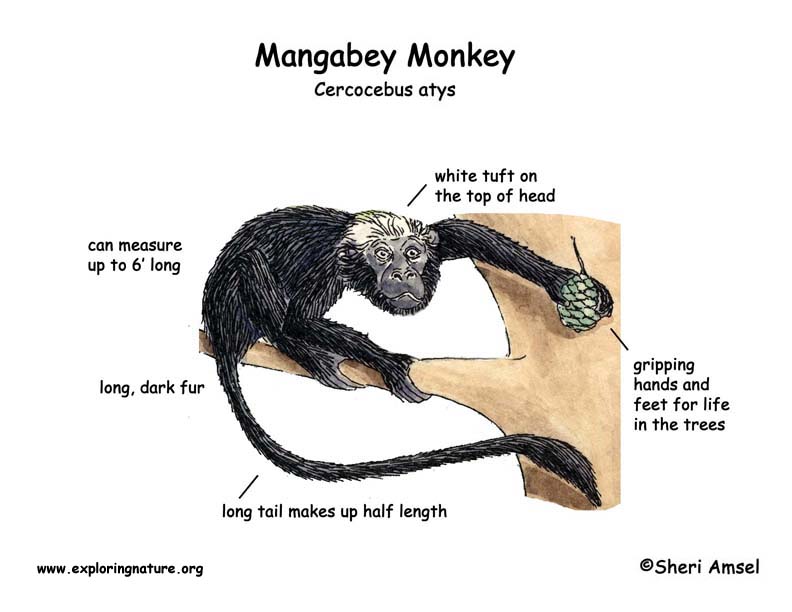

Mangabey monkeys live in the forests of West Africa and Zaire.
They can be found in dense rainforests, mangroves, and swampy forests. They live a good part of their lives in the trees (arboreal), but do run along the ground at times to look for fruit.
They can measure more than 6 feet long, including their tails, which make up 1/2 their body length. Females are much smaller than the males, who can weigh up to 9 pounds.
Mangabeys live in troops of up to 20 females with one lead female and a couple of males.
They eat mostly fruit, with some plants and insects.
Because of their speed and high forest habitat they have few predators.
Females are pregnant for 51/2 - 6 months (gestation) and have 1 young.
They live for 30-40 years. They are listed as Lower Risk - near threatened.
Kingdom: Animalia
Phylum: Chordata
Subphylum: Vertebrata
Class: Mammalia
Order: Primates
Suborder: Haplorrhini
Infraorder: Simiiformes
Superfamily: Cercopithecoidea
Family: Cercopithecidae
Subfamily: Cercopithecinae
Genus: Cercocebus
Species: Cercocebus atys
When you research information you must cite the reference. Citing for websites is different from citing from books, magazines and periodicals. The style of citing shown here is from the MLA Style Citations (Modern Language Association).
When citing a WEBSITE the general format is as follows.
Author Last Name, First Name(s). "Title: Subtitle of Part of Web Page, if appropriate." Title: Subtitle: Section of Page if appropriate. Sponsoring/Publishing Agency, If Given. Additional significant descriptive information. Date of Electronic Publication or other Date, such as Last Updated. Day Month Year of access < URL >.
Amsel, Sheri. "Monkey (Mangabey)" Exploring Nature Educational Resource ©2005-2024. December 13, 2024
< http://www.exploringnature.org/db/view/Monkey-Mangabey >

